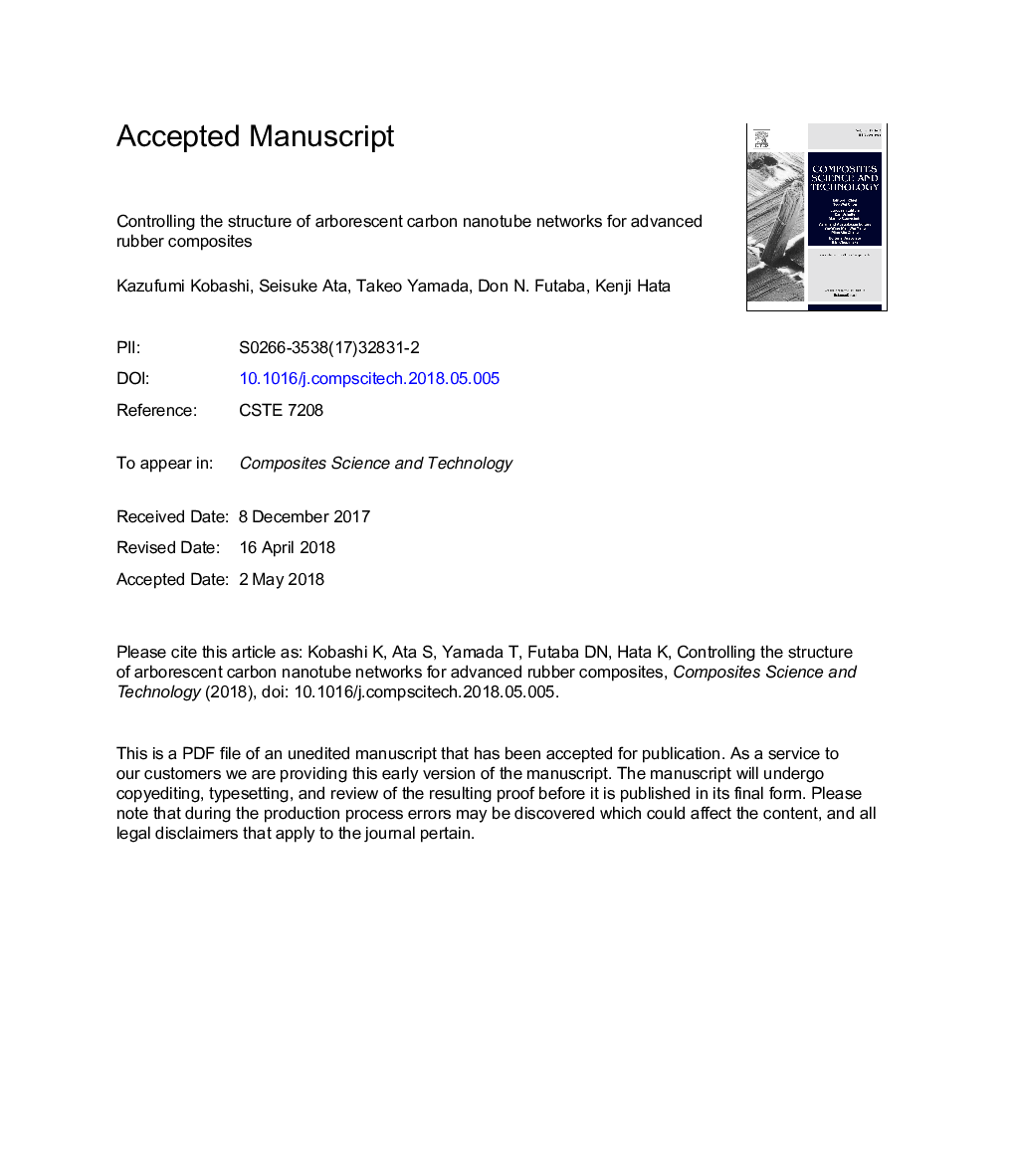| Article ID | Journal | Published Year | Pages | File Type |
|---|---|---|---|---|
| 7214303 | Composites Science and Technology | 2018 | 28 Pages |
Abstract
We propose a method for controlling the arborescent structure of long carbon nanotubes (CNTs) to harness their intrinsic properties in advanced rubber composites. Our method of structural control was based on a wet-jet mill to vary the shear forces (20-150â¯MPa) applied to aligned single-wall CNTs in solution. As the pressure of jet mill increased, the resulting suspended CNTs changed from agglomerates of bundled “trunk”-like structures to a CNT “mesh”-like structure with a high degree of disentanglement and absence of the “trunk”-like structures. The sizes of the CNT agglomerates became small and the number increased with the pressure of jet mill, indicating that smaller “mesh”-like CNT structures were formed with shortening of CNTs. This knowledge was used to increase the electrical conductivity of a CNT-rubber composite, highlighting the need to optimize the disentanglement state of the CNTs for application towards composite materials. Thus we successfully fabricated a CNT rubber with higher electrical conductivity (1.4â¯Ãâ¯10â2â¯S/cm) by balancing the disentanglement and shortening of the CNTs at the jet mill pressure of 120â¯MPa. On the other hand, the higher pressure of 150â¯MPa resulted in the lowest conductivity (7.5â¯Ãâ¯10â4â¯S/cm) due to more extensive shortening of CNTs.
Keywords
Related Topics
Physical Sciences and Engineering
Engineering
Engineering (General)
Authors
Kazufumi Kobashi, Seisuke Ata, Takeo Yamada, Don N. Futaba, Kenji Hata,
